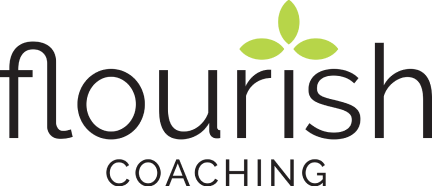Goal Setting for Students
A goal without a plan is only a wish.
This is great wisdom and is often forgotten by people of all ages, but it can be particularly problematic for students. While most don’t want to be told what to do by you, mom, or dad, there are sneaky ways to catch their attention, set an example, and have intentional conversations around this so they’ll latch on to the framework.
How Student Goal Setting Differs from Adults
In my goal setting, which I learned from Michael Hyatt, I’ve learned to set only 8 to 12 goals per calendar year. One of the early realizations I had when adopting Hyatt’s system was I hadn’t done a great job of recognizing the difference between a goal and a task. I was overwhelmed and defeated from the beginning by setting too many goals.
My goals are aligned with my vision of the future I want to design for myself. Goals are steps to achieve the vision. Some tasks might push toward the goals, but many must be completed weekly. Once the difference is recognized, setting only 8 to 12 feels more manageable.
This framework is excellent for adult goal setting but doesn’t always work for two reasons.
Your student’s brain is not fully developed yet and cannot wholly embrace future and critical thinking. According to the American Academy of Child & Adolescent Psychiatry, “the frontal cortex, the area of the brain that controls reasoning and helps us think before we act, develops later. This part of the brain is still changing and maturing well into adulthood”. Teens cannot think too far into the future.
Additionally, your kiddo’s annual calendar differs significantly from the adult calendar. First, their “year” starts around August with the new school year, not in January. AND it likely has five periods, not four quarters. Most traditional school year calendars have four quarters and summer. If your school doesn’t, then adapt my thinking to what your student’s year looks like.
With these two considerations, my suggestion for student goal setting is smaller chunks, setting 8 to 12 goals for five periods, not the traditional four quarters as adults do.
The Student Goal Framework
Really, this does not differ from adults. In my paper planner, yes, I still believe in paper and writing things out (check out why!), I write out each goal in the SMARTER framework:
- Specific
- Measurable (how will you know you achieved it?)
- Actionable (use a lot of verbs!)
- Risky (push yourself!)
- Timebound (have a sense of urgency and a deadline)
- Exciting (connect with the goal to be inspired)
- Relevant (does it connect with your vision and values?)
I use the Full Focus Planner by Hyatt, which I highly recommend. I’ve seen using the Full Focus Planner make a difference in my own life.
Student Goals
First, start with a vision that is not too distant. Spark a conversation with your teen or young adult around what the future looks like for them 1 to 3 years out. Ask many questions to guide them instead of directing or telling them what to do. If you have a thought you want to tell them, pause and reword it as a question…then wait for them to speak. If they get overwhelmed, table it and come back to it later.
The vision might be to attend a particular college after high school, get a college internship, achieve a specific GPA in school that might open doors, or get involved in a new hobby or extracurricular. Future visions have a lot of components, including school, vocation, hobbies, physical, financial, and relationships, to name a few.
Next, create a goal for one of the quarters that would be a step toward achieving the vision. I typically start with the nearest quarter and then work outward. At the end of each period, I reevaluate my achievements and what should come next. I often find myself revising based on what I learned. Because I’m writing these down, I’m thankful for my favorite Frixion erasable pens….I’ve actually become addicted and own them in every color as well as their highlighters – oh my!
Finally, I plan a celebration reward AND incremental small ways to celebrate the wins along the way to the final goal. This is crucial for student success, even more than for adults. Concentrate on celebrating the wins along the way. During our live Q&A sessions in my digital course, I asked my students a question about a habit related to the course. Opal hit it 100% – what did I do? I celebrated by gifting her an Amazon gift card. No one knew I had planned to do so, so they weren’t doing it for a reward. Opal is one impressive young lady who is on her way to executing her vision for her life.
What Comes Next
My final advice is to be intentional, create the time and space to achieve the goals, and design a course toward the vision. If you don’t design it with time in the week, you’ll drift and leave it to chance that you’ll get to your best-fit destination.
If a goal for your student is to figure out what comes after graduation, my digital course Launch Career Clarity for 16 to 25-year-olds is the best way to achieve that goal.

